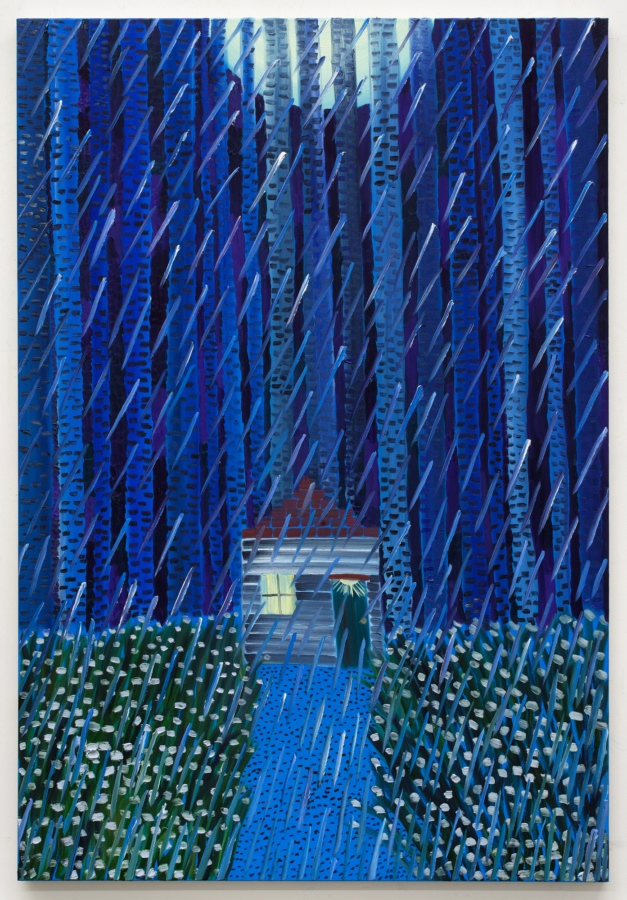November 21, 2019
Download as PDF
View on White Elephant on Wheels

Blue Rain, 2018, oil on canvas, 72 × 48 inches
All painters should share an ache while mourning the loss of Matthew Wong. This youthful master left way too much art undone. Maybe in some parallel universe he still works his gloriously pictorial lifestyle. I hope he’s feeling better wherever he might be.
Wong’s clean cut fluidity displays a succinctly delicate touch. That he never encountered any formal training is bad news for art schools, the lesson being that some things cannot be taught.
There is a dreamy congruence to Wong’s crisp narratives that seamlessly bridge sentiment and sensation. This dichotomy between detailed description and inventive intuition leads viewers into fictionalized notions of representational scenery.
The compelling compositional integrity fluxes into and out of figuration and landscape with a profound uncertainty. There is an almost cartoonish nuance that encapsulates a charming naivety. These are fairytales rooted in a pensive, brooding anxiety, not scary but possibly foreboding.
A psychological drama pervades his still-life assemblages, as intensely chromatic spotlights illuminate corners in the flat-ish Matisse-esque picture plane.
The sumptuous flourish of Wong’s brushstroke is breathtaking. It is rare to encounter such dexterity and purity of intent. Pools of effervescent luminosity transmogrify pigment into a lusciously smooth slipperiness. There can be no doubt about the clarity of design, but seen within a context of highly charged emotive ambiguity. His imagery resists literal interpretation, while evoking an unspoken, yet plaintive response.
I can’t imagine he reworked these canvases very often. They simultaneously contain a pictorial immediacy and contemplative resonance, while utilizing a deftly executed graphic interface that infuses an intricately dramatic balancing act with a gliding ease of almost offhand elegance. Its as though he never forced a mark on his pictures, accordingly they are always in harmonious juxtaposition.
This apparent lack of artistic struggle belies a life in turmoil. His depression must have been an overriding influence on the melancholy atmospherics. There is a chilly dark loneliness of space that presages an all encompassing void. Wong’s paintings seem to be staring out the window in the middle of a sleepless, Hopper-esque night.
Even the more expansive imagery morphs into interiors. This is nature seen through a psychic portal that is always indoors, quietly sheltered from the elements.
I hope Wong knew how good his work was, and derived some degree of reassurance that his life had meaning. Tragedy knows no bounds, and this exalted artist will always be remembered with a tint of regret.
“Sometimes I could just be making marks almost haphazardly and at a certain point I step back and realize I have a finished, satisfactory image that I have no idea how I managed to pull that one off,” he told Studio Critical when he was just getting started, in 2013. “I’m just going with my gut at the moment. But often times, my gut also cancels itself out and I keep painting over an image with a totally different image, and work like this can go on for months before a single surface is resolved.”



